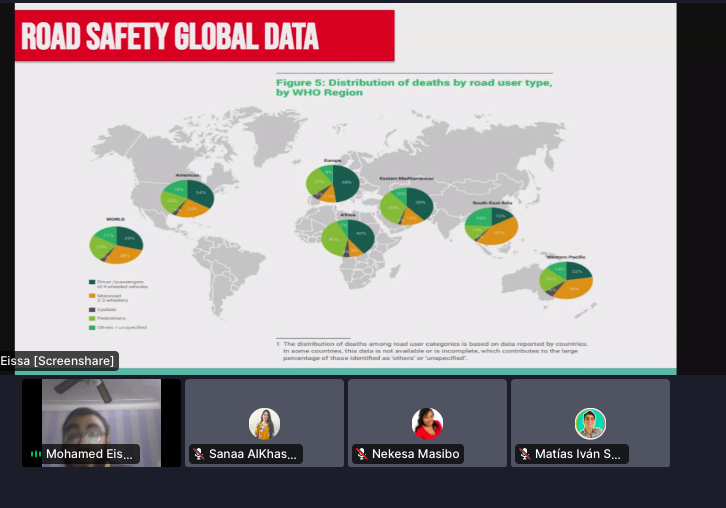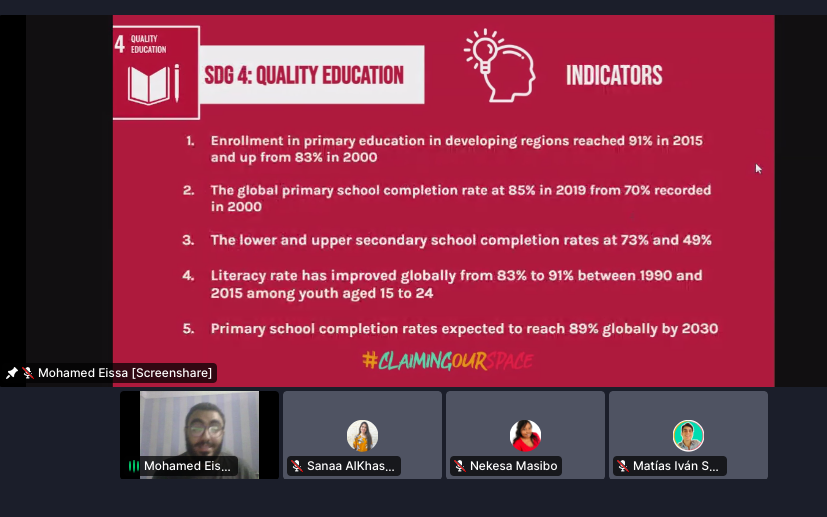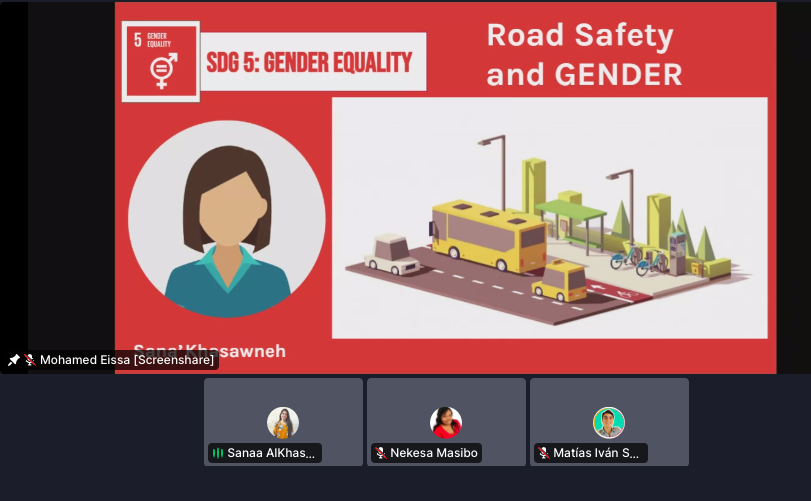Last week, June 10 – 11, UNITE 2030 launched its third SDG Youth Summit focused on mobilizing, empowering, and inspiring young people to take action toward the achievement of the Global Goals.
Regional leaders Mohamed Eissa, Sana’ Khasawneh, Matias Ivan Schulz, and Linda Nekesa Masibo gave a presentation to talk about how road safety connected with the other Sustainable Development Goals.




